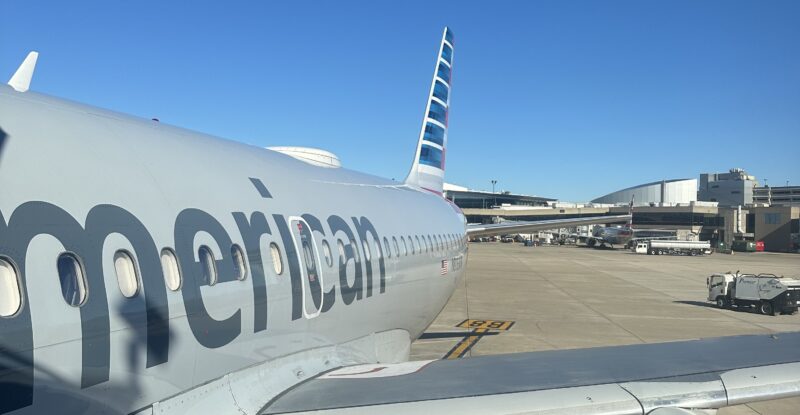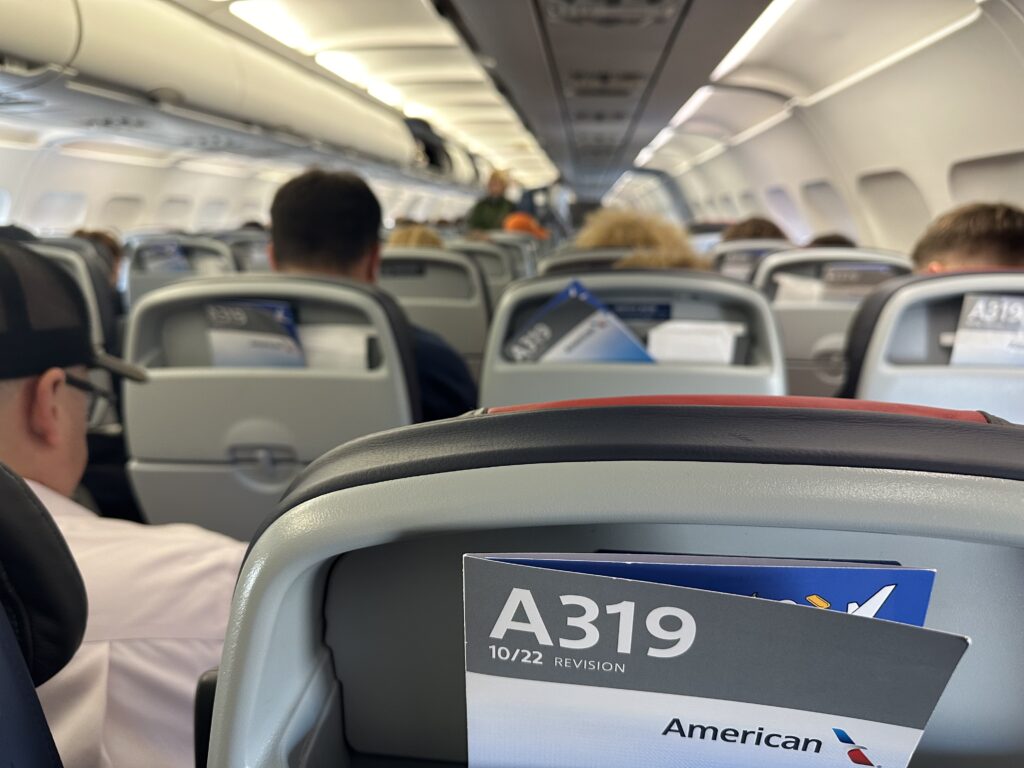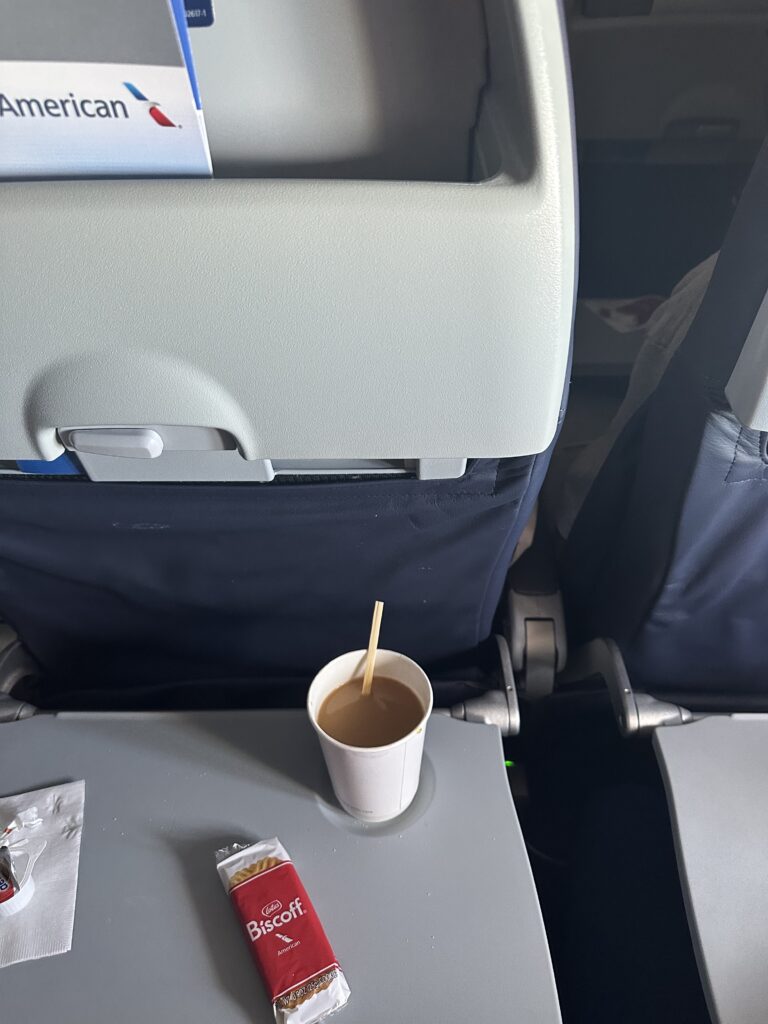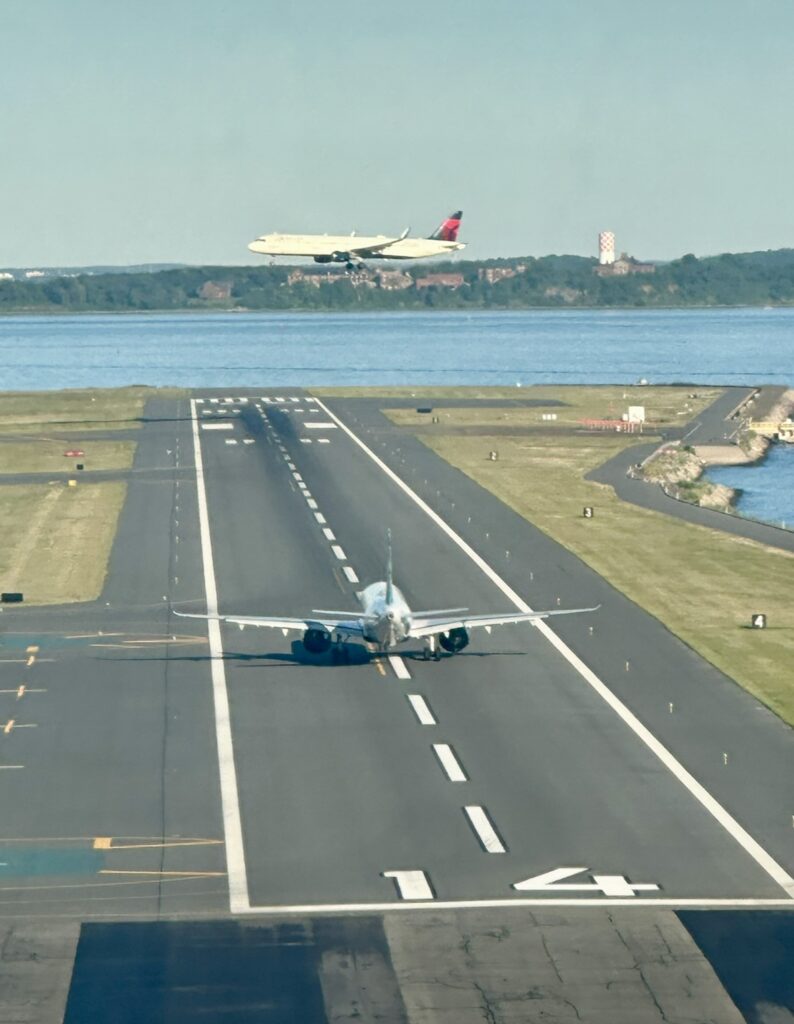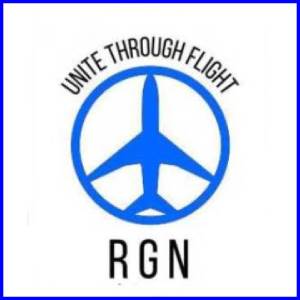 Nothing says “welcome to the City of Brotherly Love” quite like the threat of having your vehicle’s tires destroyed.
Nothing says “welcome to the City of Brotherly Love” quite like the threat of having your vehicle’s tires destroyed.
But that’s the message Philadelphia International Airport (PHL) is sending to paying customers in its ground-level short-term parking lot, where it has dedicated a sizable amount of space in Garage B to exclusive discounted parking for American Airlines’ AAdvantage Aviator Mastercard holders, and is using tire shredder spikes to deter others.
Take a wrong turn, my friend — as I very nearly did — and you’ll be calling AAA instead of boarding your AA flight.
Thankfully, the unpleasantries started and ended in the garage because American excelled in nearly every way on a recent roundtrip between PHL and Boston Logan aboard the carrier’s venerable legacy US Airways A319 twinjets.
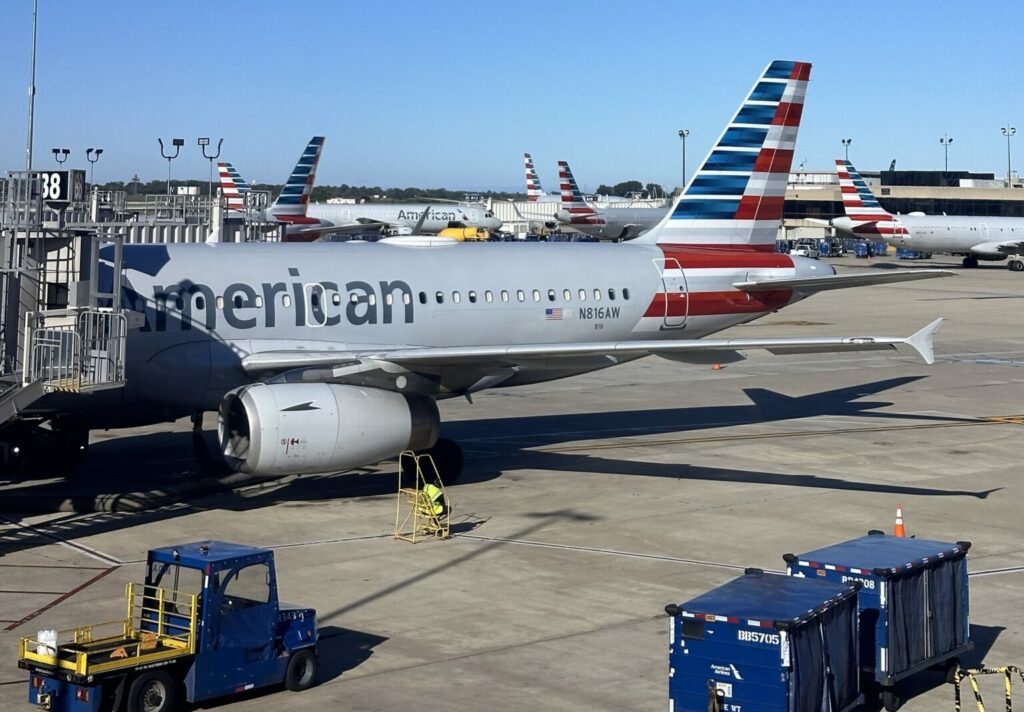 Boarding began on time, and with just a backpack in tow for a very short business trip, I didn’t stress about securing overhead bin space.
Boarding began on time, and with just a backpack in tow for a very short business trip, I didn’t stress about securing overhead bin space.
I made my way to the back of the bus. And I mean that quite literally as I was flying in a middle seat in the very last row of this Airbus narrowbody. It turns out there was still enough room in the overhead bin for my bag.
Though the thermoplastic seatbacks looked fresh, the seats are padded like it’s 1999. That doesn’t work for all body types, but I can tell you that this lean lass appreciates a squashy seat. I sunk right in and enjoyed the view of everyone’s heads.
As regular flyers know, the middle seat armrests are intended for the middle seat passenger (or very well should be). Flanked by broad humans on either side of me, I opted to go bench-style and leave the armrests up. This decision fostered goodwill in my row and we were a happy threesome down back.
Legroom was constrained, but that’s mainly because a lower literature pocket inhibited my living space. Remove this unnecessary pocket, American, and passengers would have nearly an inch more room for their knees. (Retrofits are planned for 2025.)
Writing about inflight connectivity on the regular means that I rarely pass up the opportunity to put an IFC system through its paces, even if the prices are ridiculously high for a 1.30hr flight. And so, I immediately connected to American’s Wi-Fi portal, and tried to pay for the $15 flight pass.
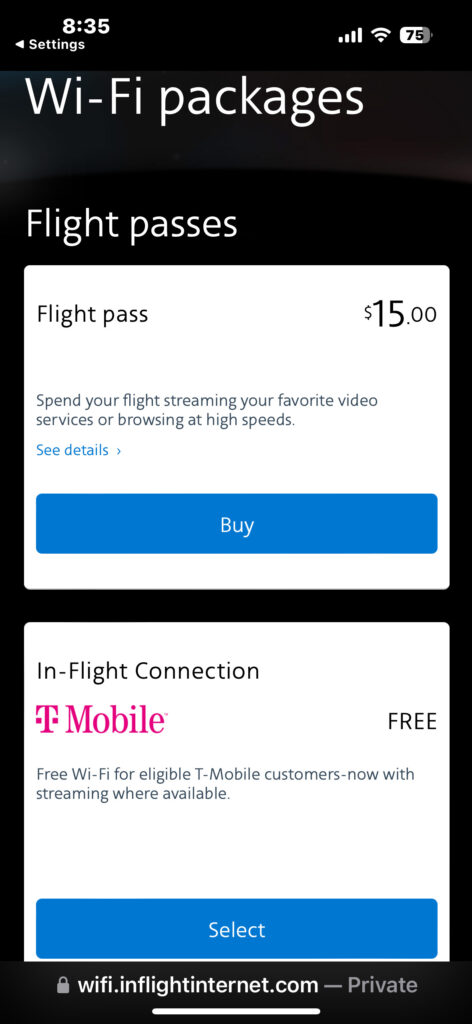 I’ve had mixed experiences with American’s payments system in the past. It can be a serious choke point to getting connected. As in the past, the portal’s PayPal integration failed, greeting me with the dreaded perennial spinning wheel. But my second attempt to pay, this time with a credit card, worked.
I’ve had mixed experiences with American’s payments system in the past. It can be a serious choke point to getting connected. As in the past, the portal’s PayPal integration failed, greeting me with the dreaded perennial spinning wheel. But my second attempt to pay, this time with a credit card, worked.
 American has taken a multi-source approach to its aero ISPs, with Viasat’s Ka-band satellite-powered service offered on the lion’s share of its domestic fleet, Intelsat 2Ku aboard some A319s and A320s, and Panasonic Avionics Ku on its Boeing widebodies.
American has taken a multi-source approach to its aero ISPs, with Viasat’s Ka-band satellite-powered service offered on the lion’s share of its domestic fleet, Intelsat 2Ku aboard some A319s and A320s, and Panasonic Avionics Ku on its Boeing widebodies.
I don’t put much stock in speed tests, which can be manipulated. But if an inflight Wi-Fi connection largely allows me to do in the air what I can do on the ground (stream video, use social media in an unfettered way, publish content, and upload videos) — as Intelsat 2Ku did here — I’m a happy camper.
That said, the speed tests on board this AA A319 seemed to be an accurate assessment of the fast experience I was having. (And despite the reading, I didn’t observe a latency issue.)
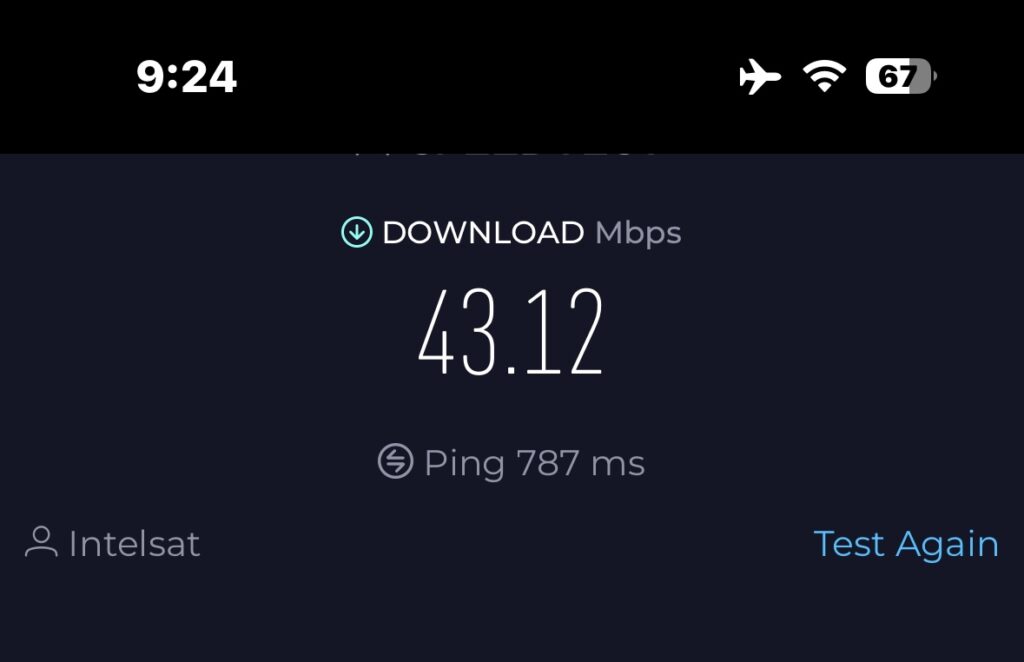 Did my experience represent some sort of anomaly? I don’t think so. Last August, on an AA roundtrip between PHL and Charleston, South Carolina, the Intelsat 2Ku-powered Wi-Fi was similarly strong and consistent, keeping me contentedly connected on the outbound and the return flight without interruption. And I clocked very similar speed test results.
Did my experience represent some sort of anomaly? I don’t think so. Last August, on an AA roundtrip between PHL and Charleston, South Carolina, the Intelsat 2Ku-powered Wi-Fi was similarly strong and consistent, keeping me contentedly connected on the outbound and the return flight without interruption. And I clocked very similar speed test results.
 Ensuring connectivity is accessible from gate to gate is particularly important on shot-hop flights, as the actual in-air time is brief. But I think we can all agree that it’s doubly important if you’re charging $15. (AA also now accepts payment in miles from AAdvantage loyalty members.)
Ensuring connectivity is accessible from gate to gate is particularly important on shot-hop flights, as the actual in-air time is brief. But I think we can all agree that it’s doubly important if you’re charging $15. (AA also now accepts payment in miles from AAdvantage loyalty members.)
There are a few benefits to sitting in the last row on a flight of this duration. For one, if you’re hankering for a diuretic like coffee, you’ve got easy access to the lavatory. A friendly crew member handed me a decent hot coffee and Biscoff cookies and both really hit the spot.
Before long, we were landing safely and on time in lovely Boston. And within minutes, I was headed to my new favorite airport hotel, the Hyatt Place Boston/Seaport District, which boasts spectacular views of the Boston skyline and Logan’s cute but controversial Runway 14/32.
My return flight, this time in first class, was equally pleasant, again hitting the trifecta of on-time arrival, affable and professional crew and another very strong Wi-Fi connection.
 American Airlines has pursued a BYOD model for most of its narrowbodies. In addition to paid connectivity, it offers free streaming entertainment (the content is cached on an onboard server).
American Airlines has pursued a BYOD model for most of its narrowbodies. In addition to paid connectivity, it offers free streaming entertainment (the content is cached on an onboard server).
During the Aircraft Interiors Expo (AIX) in Hamburg, American vice president of customer experience Kimberly Cisek indicated that the carrier is staying the course on this model for its narrowbody fleet, and eschewing seatback IFE for all but its current A321Ts and forthcoming A321XLRs.
“What we have invested in is having the most high-speed Wi-Fi on all of our narrowbody aircraft as well as entertainment for our customers so we’ll continue to invest in that space as we move forward,” she said.
Though there is certainly still room to improve the payment system integration with American’s portal, Cisek’s Wi-Fi boast at AIX seems fair enough.
I won’t flinch at paying for higher-priced Wi-Fi if the carrier can guarantee this type of connected experience on every flight.
On an aside, I reckon there’s got to be a better way of cordoning off the AAdvantage Aviator lot at PHL.
The promotion, which offers a 20% discount and enables card holders to park overnight on the ground floor, ends on 4 September.
Related Articles:
- American stays the course with wireless IFE for most narrowbodies
- VIDEO: American Airlines reveals preview of A321XLR
- How NetForecast helps airlines meet DOT rule on Wi-Fi refunds
- Status-free agent takes United 737 MAX first class for a spin
- American’s soft product push feels premium, if at times complicated




